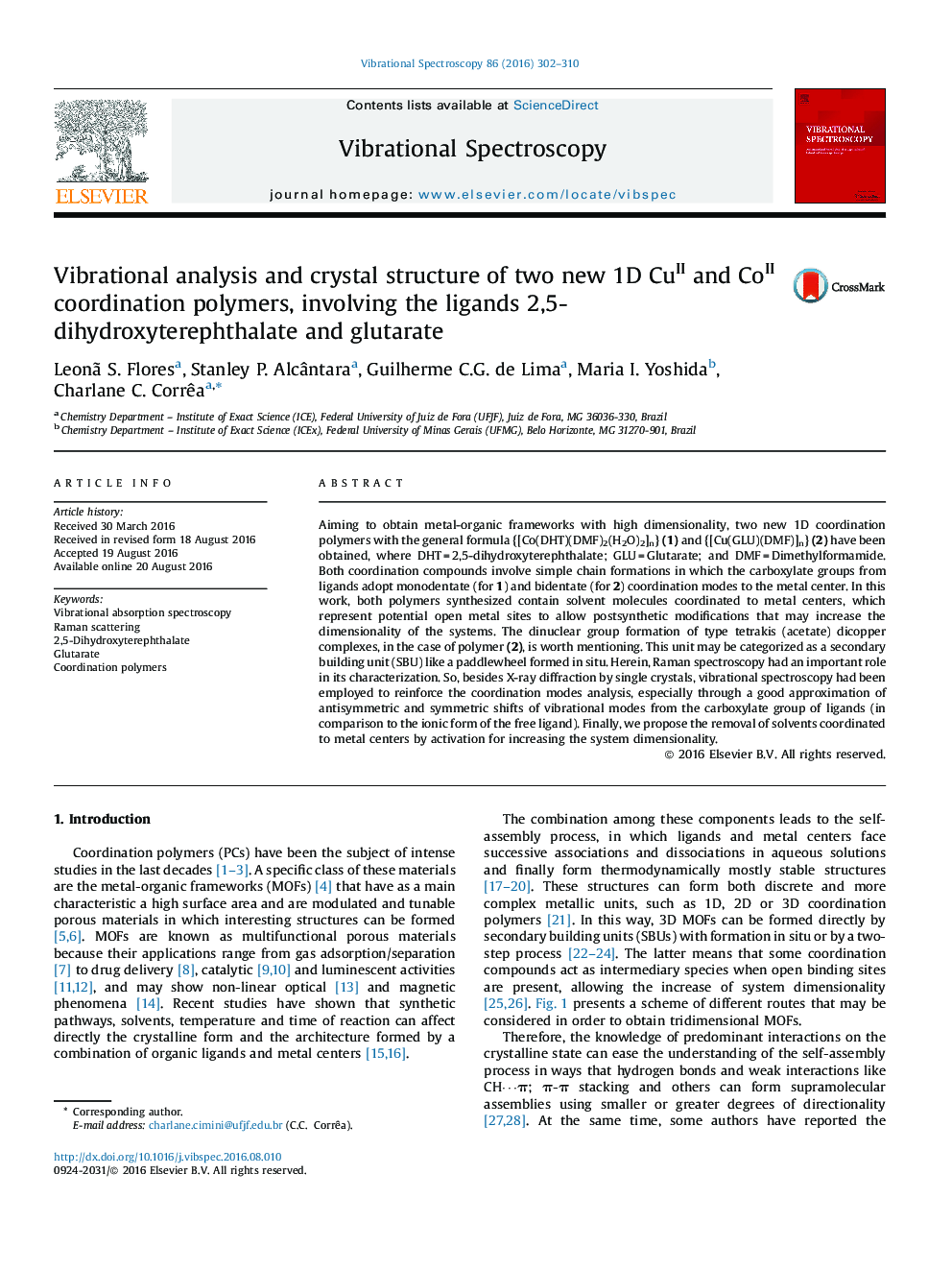| Article ID | Journal | Published Year | Pages | File Type |
|---|---|---|---|---|
| 1249532 | Vibrational Spectroscopy | 2016 | 9 Pages |
•Reactions of CuII and CoII ions with 2,5-dihydroxyterephthalic and glutaric acids were performed.•The ligand bridges the metal sites giving rise to 1D coordination polymers.•The presence of solvent molecules, coordinated to metal centers, leads to potentially reactive metal sites to allow Postsynthetic modifications.
Aiming to obtain metal-organic frameworks with high dimensionality, two new 1D coordination polymers with the general formula {[Co(DHT)(DMF)2(H2O)2]n} (1) and {[Cu(GLU)(DMF)]n} (2) have been obtained, where DHT = 2,5-dihydroxyterephthalate; GLU = Glutarate; and DMF = Dimethylformamide. Both coordination compounds involve simple chain formations in which the carboxylate groups from ligands adopt monodentate (for 1) and bidentate (for 2) coordination modes to the metal center. In this work, both polymers synthesized contain solvent molecules coordinated to metal centers, which represent potential open metal sites to allow postsynthetic modifications that may increase the dimensionality of the systems. The dinuclear group formation of type tetrakis (acetate) dicopper complexes, in the case of polymer (2), is worth mentioning. This unit may be categorized as a secondary building unit (SBU) like a paddlewheel formed in situ. Herein, Raman spectroscopy had an important role in its characterization. So, besides X-ray diffraction by single crystals, vibrational spectroscopy had been employed to reinforce the coordination modes analysis, especially through a good approximation of antisymmetric and symmetric shifts of vibrational modes from the carboxylate group of ligands (in comparison to the ionic form of the free ligand). Finally, we propose the removal of solvents coordinated to metal centers by activation for increasing the system dimensionality.
Graphical abstractTwo new compounds involving 2,5-dihydroxyterephthalate (DHT) and glutarate (GLU), CuII and CoII ions named {[Co(DHT)(DMF)2(H2O)2]n} (1) and {[Cu(GLU)(DMF)]n} (2) (DMF = dimethylformamide) have been synthesized and characterized by elemental analysis, infrared and Raman spectra, thermal analysis and single crystal X-ray diffraction. In both compounds, respective ligands bridge the metal centers giving rise to 1D coordination polymers. Both polymers synthesized present solvent molecules coordinated to metal centers.Figure optionsDownload full-size imageDownload as PowerPoint slide
